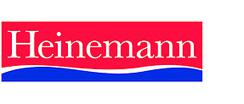- View more resources from this publisher
 Association for Science Education (ASE)
Association for Science Education (ASE)
Secondary Science Curriculum Review
The Secondary Science Curriculum Review, published by Heinemann and the Association for Science Education (ASE), ran from 1981 to 1986 with a dissemination phase from 1986 to 1989. The Review operated under the aegis of the School Curriculum Development Committee and was supported by the ASE. In addition, it received support from the Department of Education and Science, local education authorities, and the Schools Council.
Questions for the Review
The SSCR addressed a range of key questions which included:
*What sort of science education should be on offer for those of the school population who are not academically able?
*In what ways can a broad and balanced science education be provided for all young people without distorting the balance of their overall curricular provision?
*How, in an era of rapid change in science, technology and society, can school science be brought, and kept, up-to-date?
*What can be done about the increasing amount of research evidence which shows: poor understanding of new science initiatives by employers, parents, universities and children; poor uptake at the chalk-face of carefully worked out and extensively trialled teaching material?
SSCR methodology
SSCR Steering Committee decided that the model of curriculum development adopted would not be the classic centrally-based 'research, development and dissemination' model used by most earlier projects. Instead, a model which utilised its central resource to stimulate and support development at the periphery was selected. The idea was to offer all practising teachers, working in their schools and local authorities, a chance to contribute to the development work necessary to create suitable science courses for all young people.
At its peak, the Review consisted of 271 working groups. Each of these was composed of teachers, perhaps with some others and had an elected Convenor and/or Secretary. Each group had allocated itself a task concerning science education in its own school, Local Authority or ASE region. It had negotiated a descriptive 'working brief' with the Review and was working, mostly in its members' own spare time, at its selected problem.
Publications
SSCR did not publish the outputs from the many working groups. These were variously published locally, regionally or nationally in a variety of formats. The SSCR produced a directory of resources to help people to find the outcomes of the work of the Review.
In addition the SSCR gave an account of its interpretation of what young people should gain from their science education in a booklet called ‘Towards the Specification of Minimum Entitlement: Brenda and Friends.’ The Review also published the Better Science series of booklets to present the general findings of the Review in relation to a number of key issues.
Resources
Filter
The Better Science series included 12 booklets published by Heinemann and the Association for Science Education. The purpose of the series was to explore the issues arising from the recommendations of the Review in moving towards a broad and balanced science education for all young people. The guides were written...
Directory of Resources
This directory of resources published by Heinemann and the Association for Science Education listed materials produced by the Secondary Science Curriculum Review local groups and the Central Team. Some of the resources were commercially published, some were published by...
Better Science: Making It Happen
One of the aims of this publication, published by Heinemann and the Association for Science Education, was to describe the principal aims of the Secondary Science Curriculum Review (SSCR), and to convey the major outcomes of the development work undertaken during the...
Towards the Specification of Minimum Entitlement: Brenda and Friends
In April 1983 the Steering Committee of the Secondary Science Curriculum Review published a consultative paper Science Education 11-16: proposals for ac...






